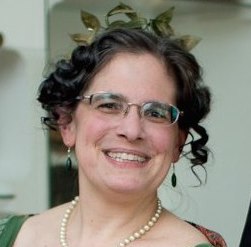I suppose this could be considered the next post in a very stretched-out series covering American “gavotte” variations for the late nineteenth century schottische; my first post on the topic appeared almost ten years ago. I’m glad I put this one off a bit, however, since my experience since then with reconstructing, dancing, and teaching rackets has given me a better appreciation for how this “gavotte” variation works. Essentially, it’s two halves: a slow schottische turn and a racket. It’s kind of beautiful.
The Schottische Gavotte, like so many other variations, is found in M. B. Gilbert’s book of couple dances, Round Dancing (Portland, Maine, 1890) and in G. W. Lopp’s La Danse (Paris, 1903). Gilbert does not attribute it. Lopp attributes it to Gilbert. Lopp also lists it as 3/4, but since it is under schottische, notated like a schottische (in 4), and has a given metronome speed of 76 beats per minute in schottische time, I think that 3/4 is an error and it is intended to be in 4/4. Other than that, the two descriptions agree nicely and the reconstruction is quite simple and straightforward. The gentleman starts with the left foot, the lady with the right.

